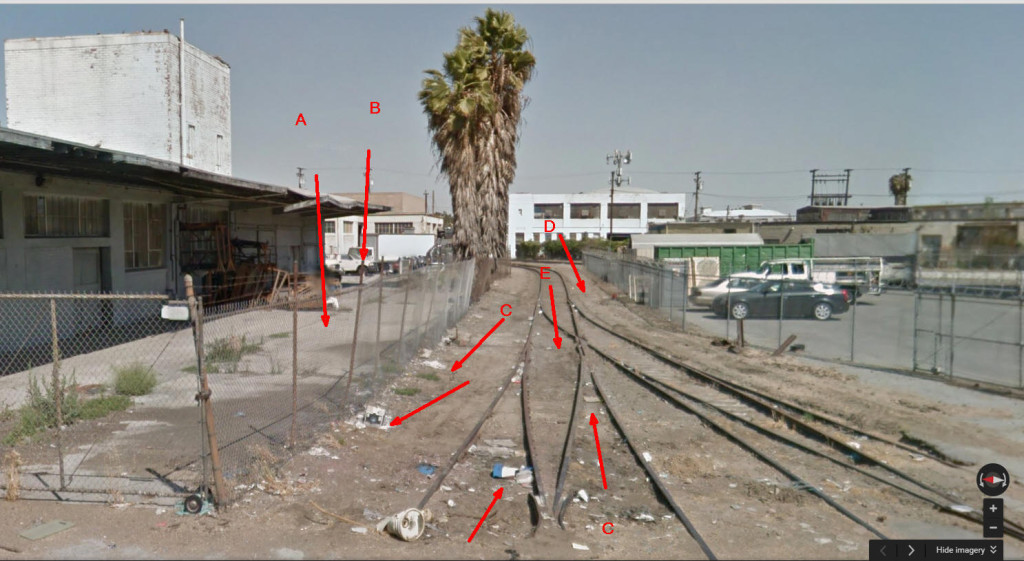It’s our ongoing quest, how do we create something that looks like a “model of a railroad” NOT a “model railroad”, not a toy train set. The answer lies in studying prototype photos, I mean really studying them and trying to get a handle on what we’re looking at. It’s not easy and it’s not something where spending money will help solve. The most difficult aspect is often determining what color we’re looking at and how we re-create it.
The image above was taken on South Maywood facing east. Let’s break it down and come up with a plan of attack.
A and B: Chain link fences are everywhere. The eye knows what they’re supposed to look like and it certainly knows when we get it wrong. They are a “mutha” to model accurately and one of the most common tip offs that a photo is of a model not the prototype. Note the fineness of the prototype mesh and rusted posts. The only way to really do this right is to use wedding “thule” aka bridal veil material (very inexpensive and found at stores such as JoAnn Fabrics). The mesh comes in gray, and rusty brown as well as white. Since you are building from scratch, you have the opportunity to get the post diameter right. Assuming they are two inches in diameter, .022″ wire would be correct.
C: The trash. Note the color (mostly white), the size, and how it accumulates against barriers such as fences, and the volume. I’ve found the tissue that is stuffed in gift bags to work well for white paper trash. Simply copy the photo as to size and distribution.
D: The soil and ballast. This is a tough one. What the heck is that color and how do you copy it? A sub-conscious tip off that we are looking at a toy is overly uniform color. Note the subtle color transitions from muddy tan to muddy gray. Note the fineness of the soil. First off, to dial this in I’d practice on a scrap first. I typically use Arizona Rock and Mineral products. I think I’d use their “Low Desert Soil” as a base but this is a larger size aggregate so you’ll need to run it through a wire strainer first. They also make blends called “industrial dirt” and “asphalt”. I’d experiment with mixing these into a variety of small batches of the low desert soil as well as sprinkling it on as on overlay.
Other things to note: the pale gray of the faded ties, the soil covering most of the ties, the stains on the asphalt behind the fence, the broken asphalt at the bottom edge of the photo (this is the shoulder of S. Maywood).
One of the things I love about model railroading is that it is such a level playing field. Exceptional results are available to everybody that is committed to putting in the time, study, and practice, and commitment. You can’t buy the solutions to the challenges in this post and those solutions are as available to the young student and retiree on a fixed income as they are to a person of means.
